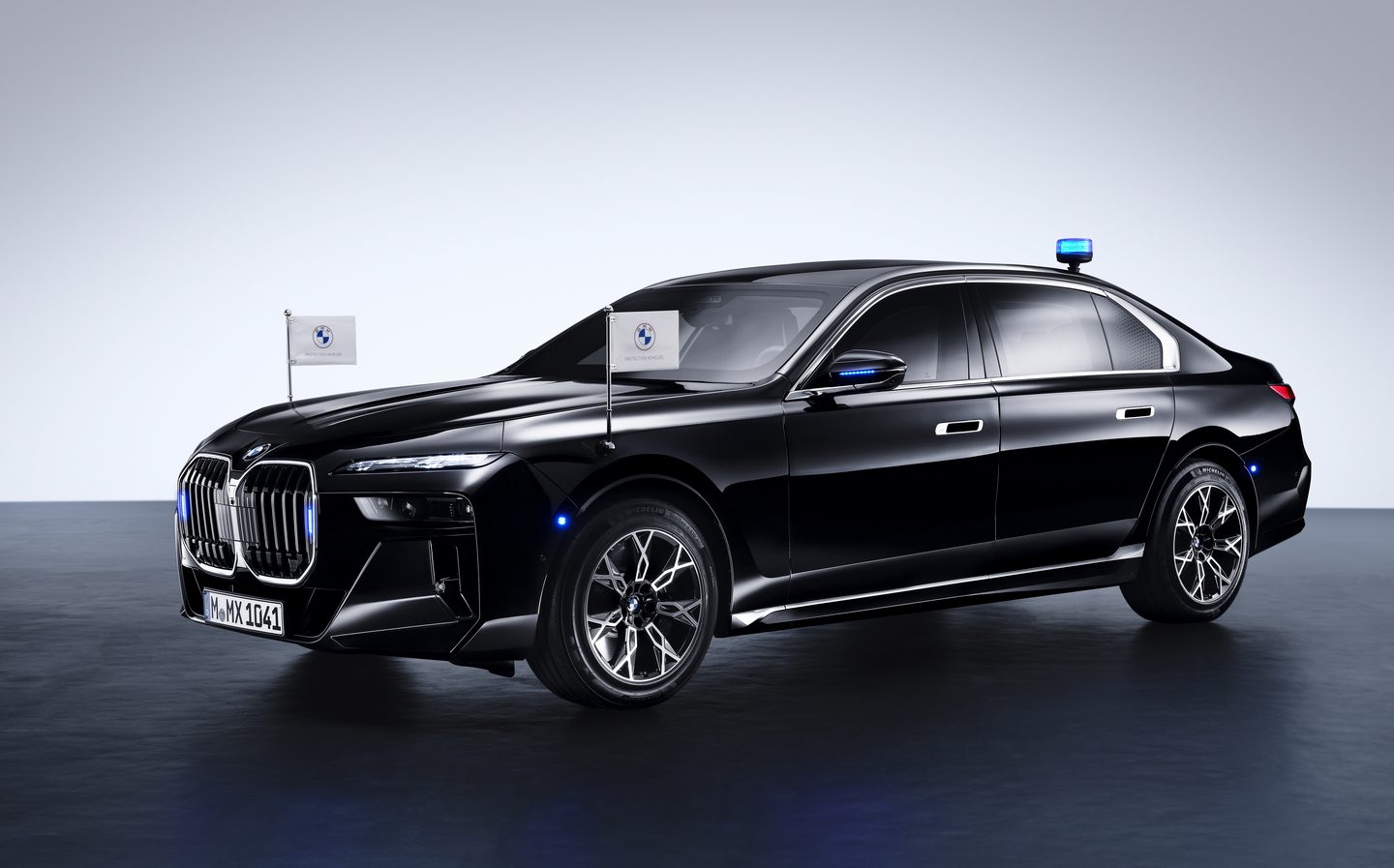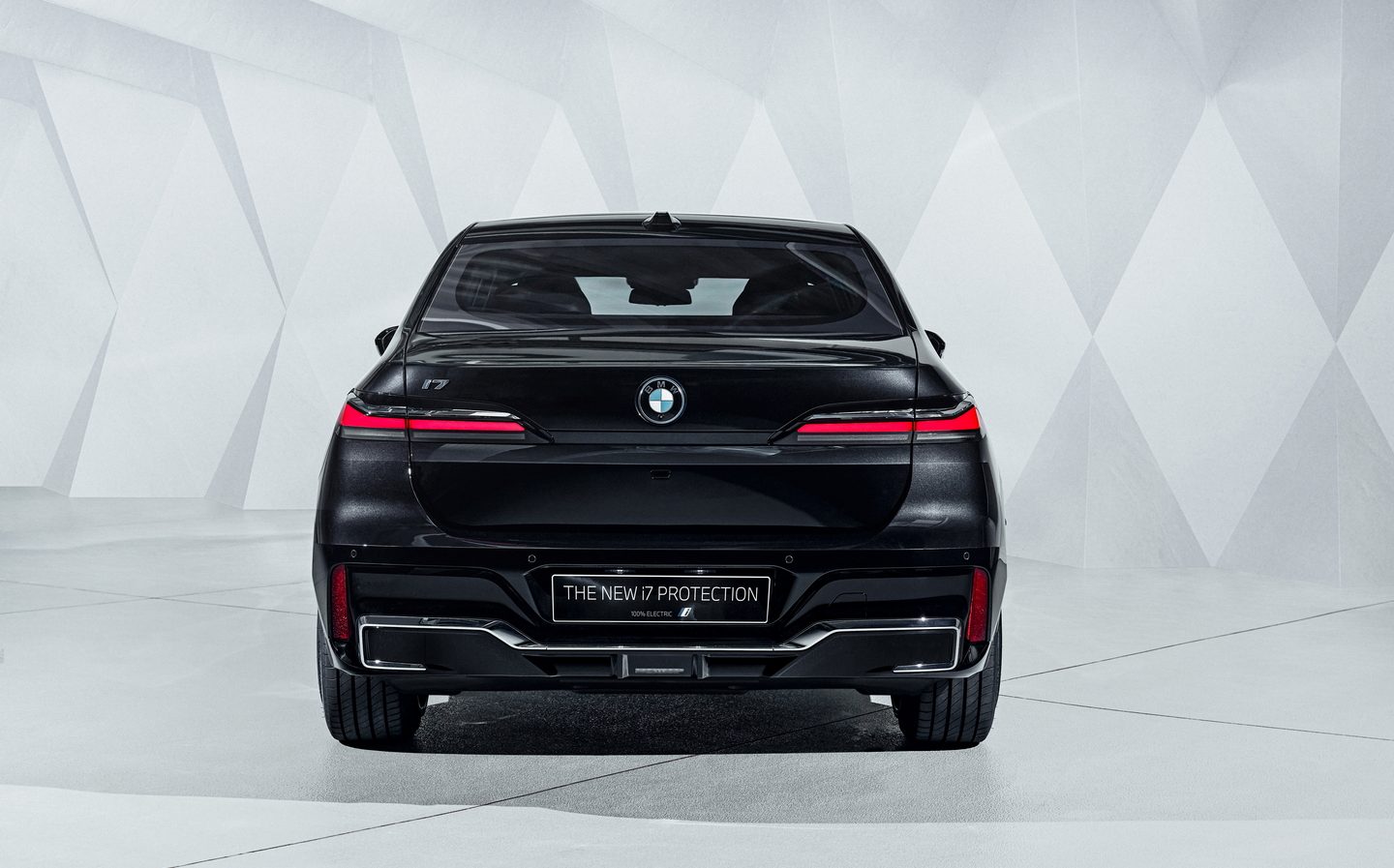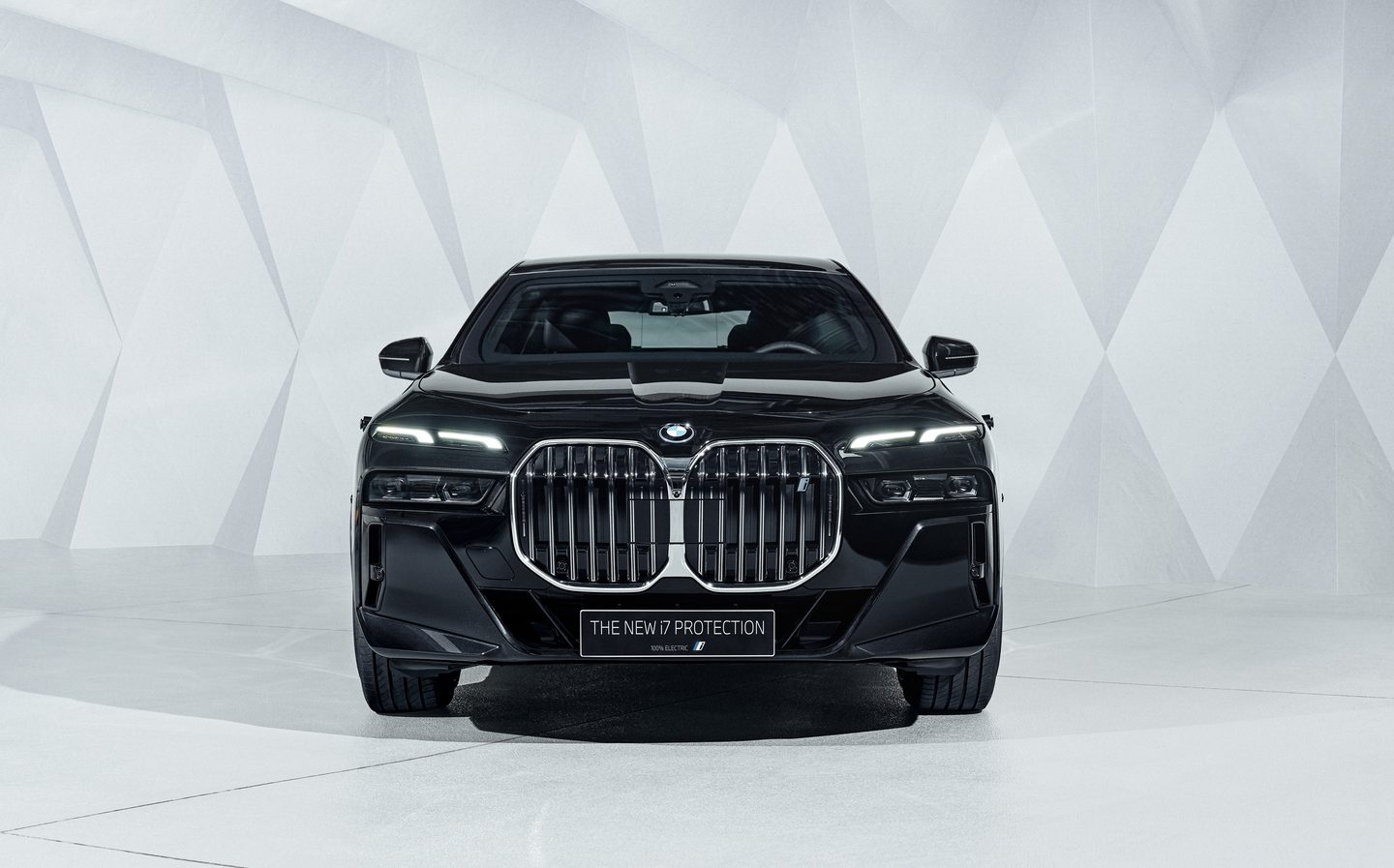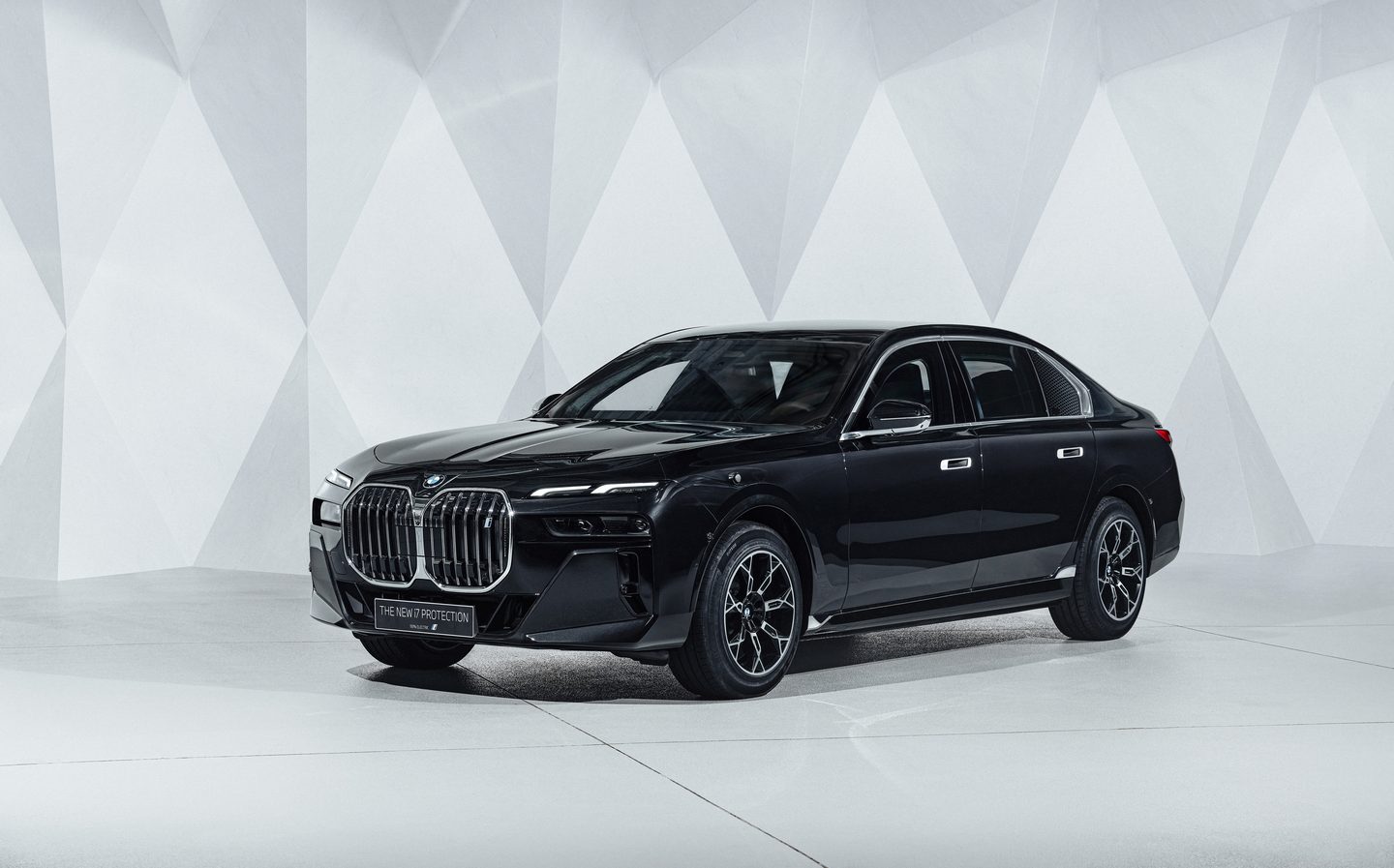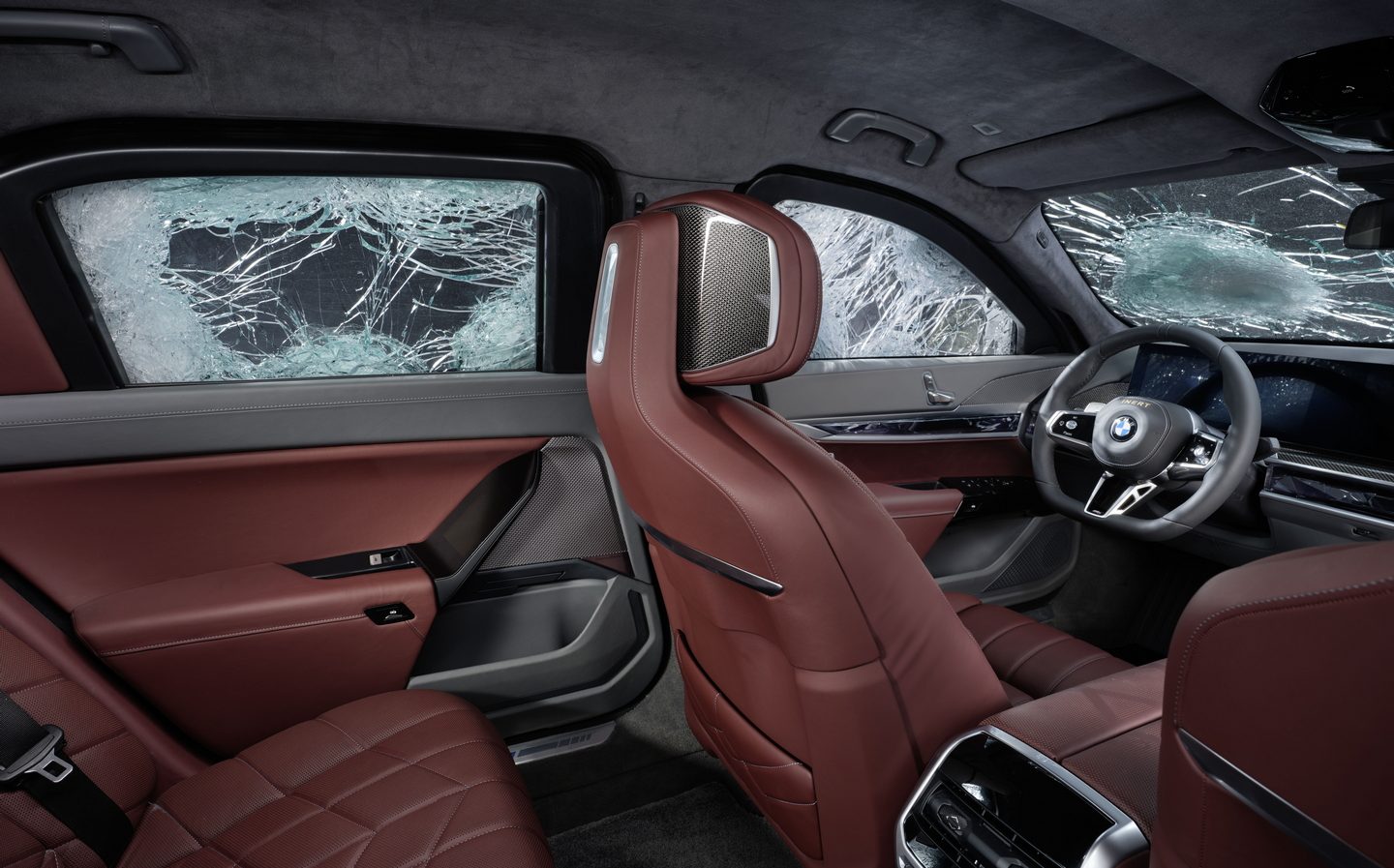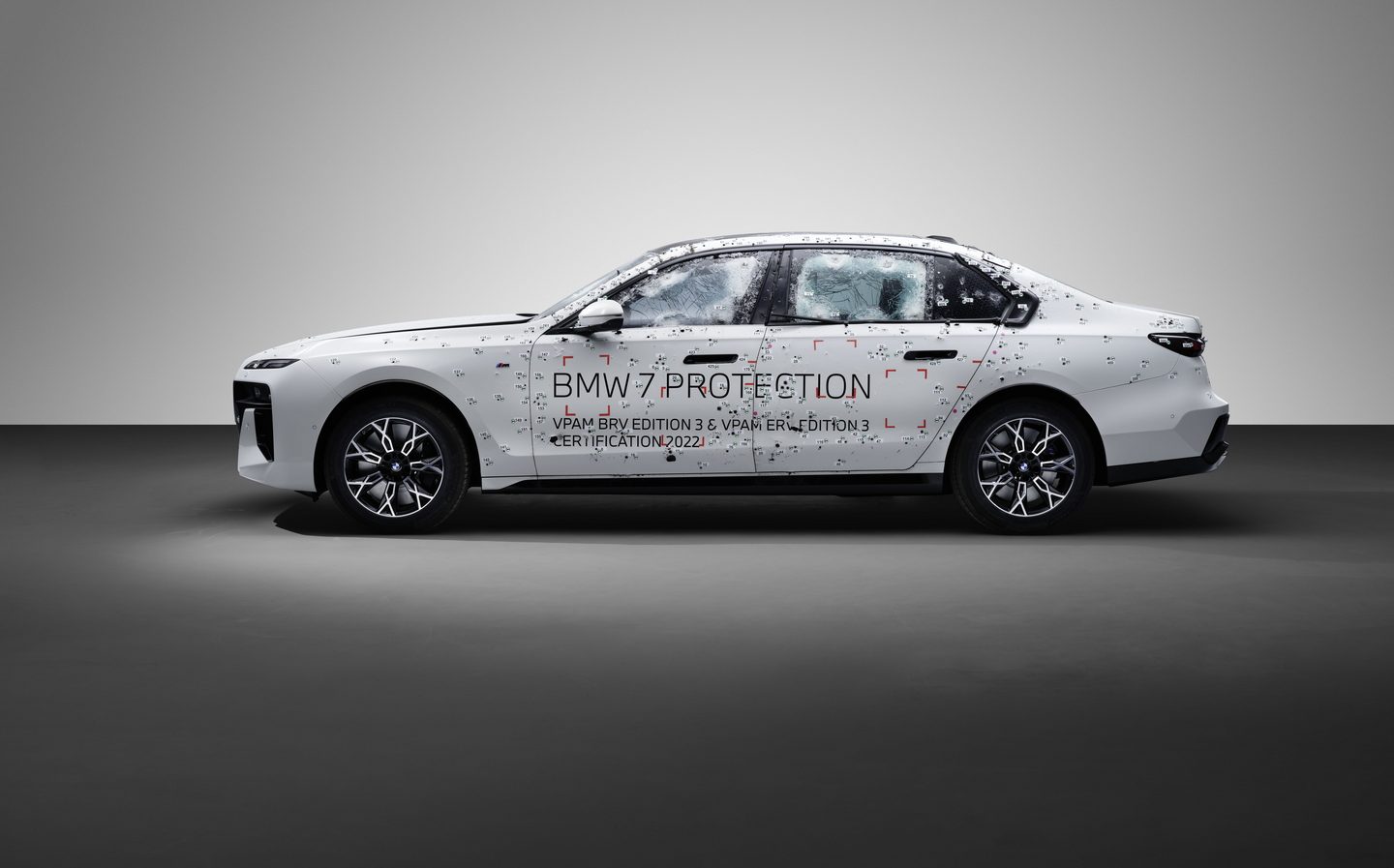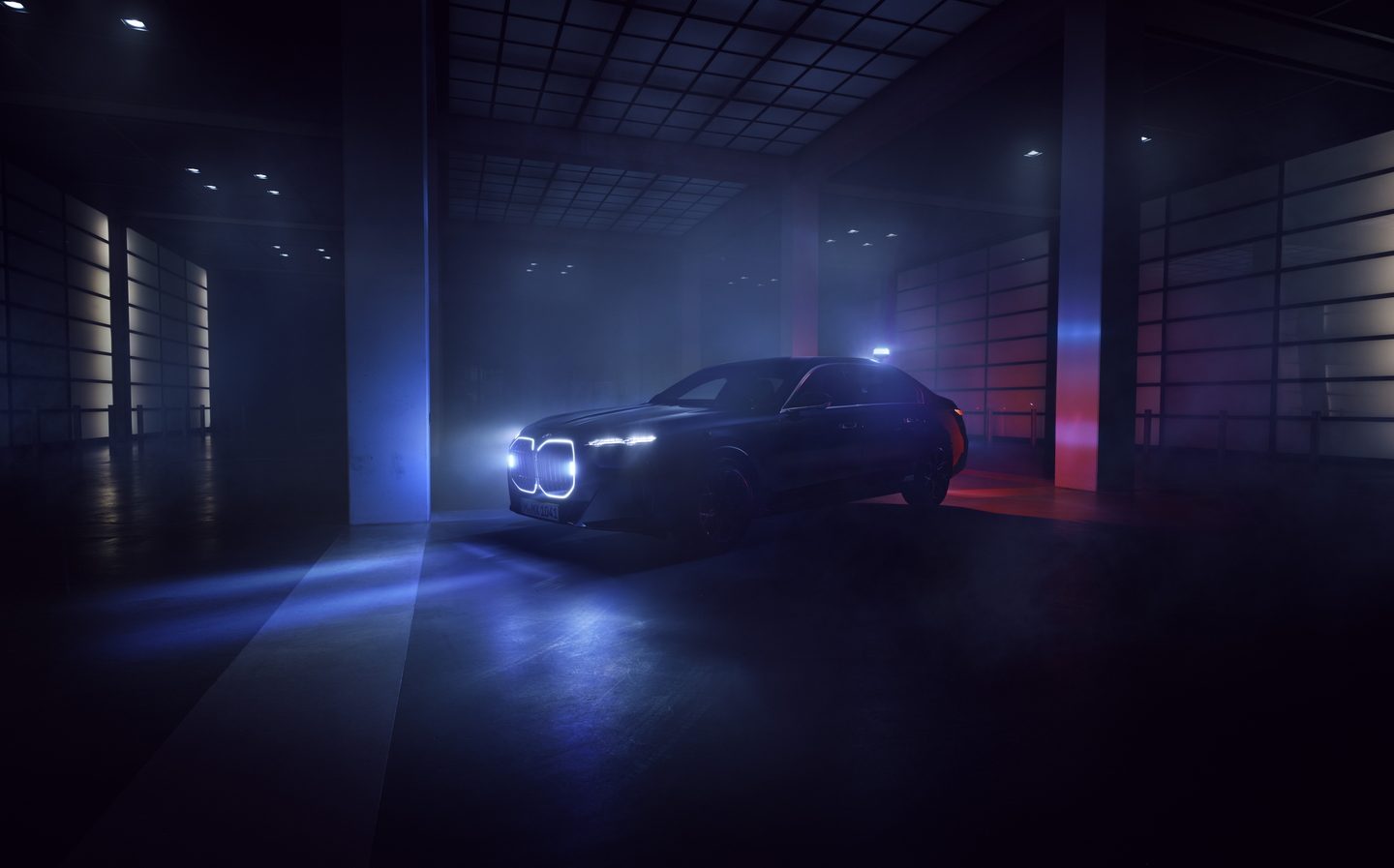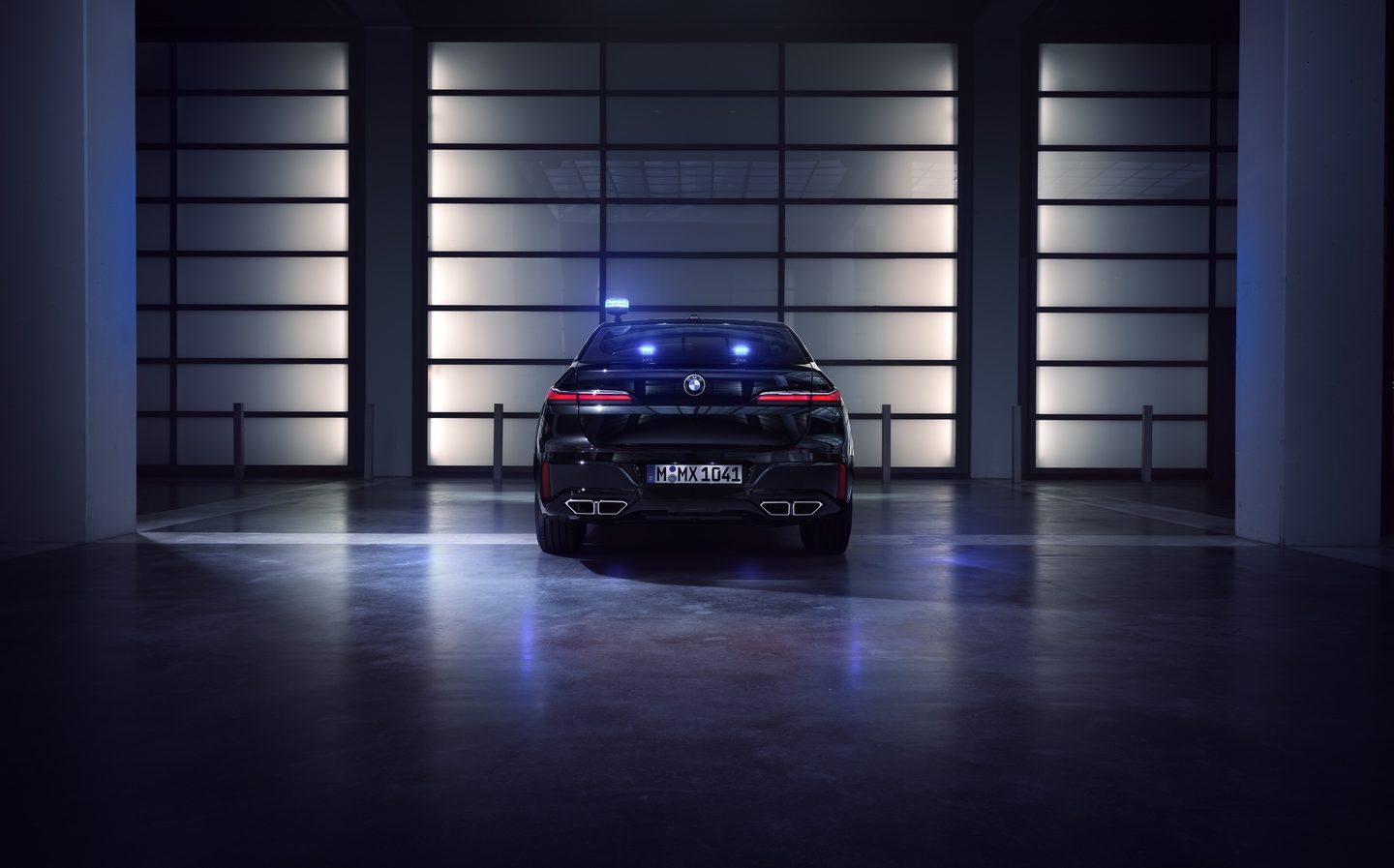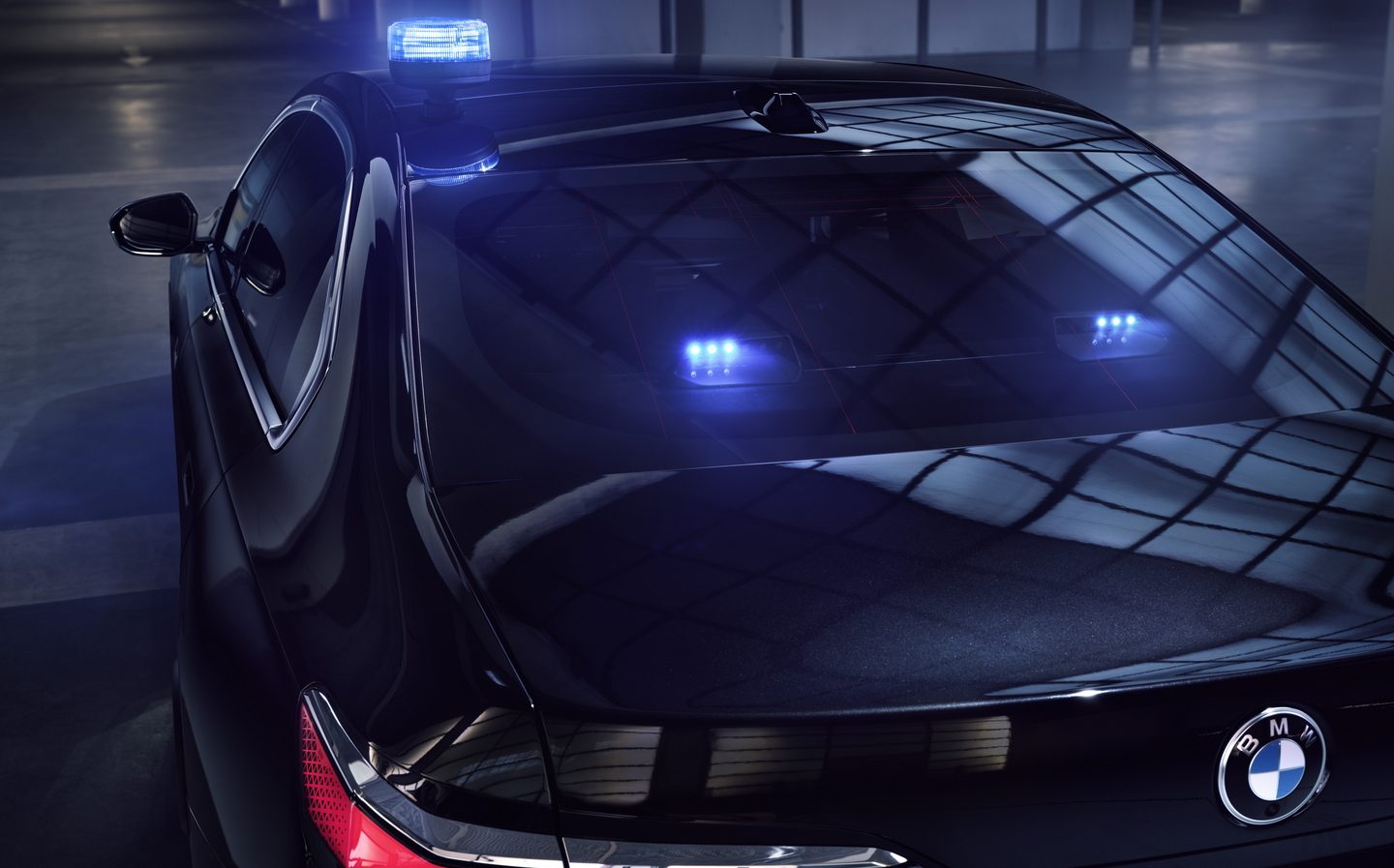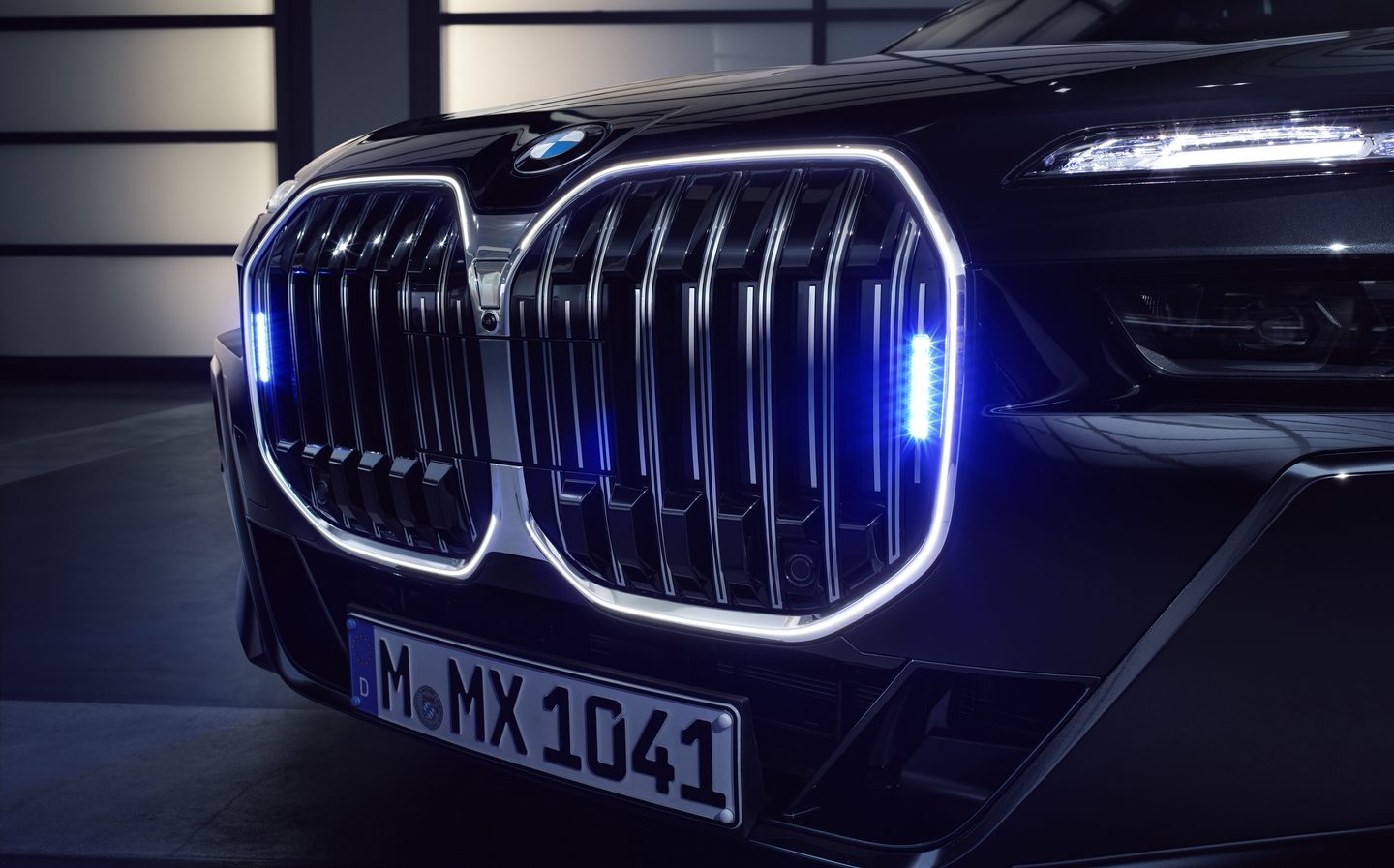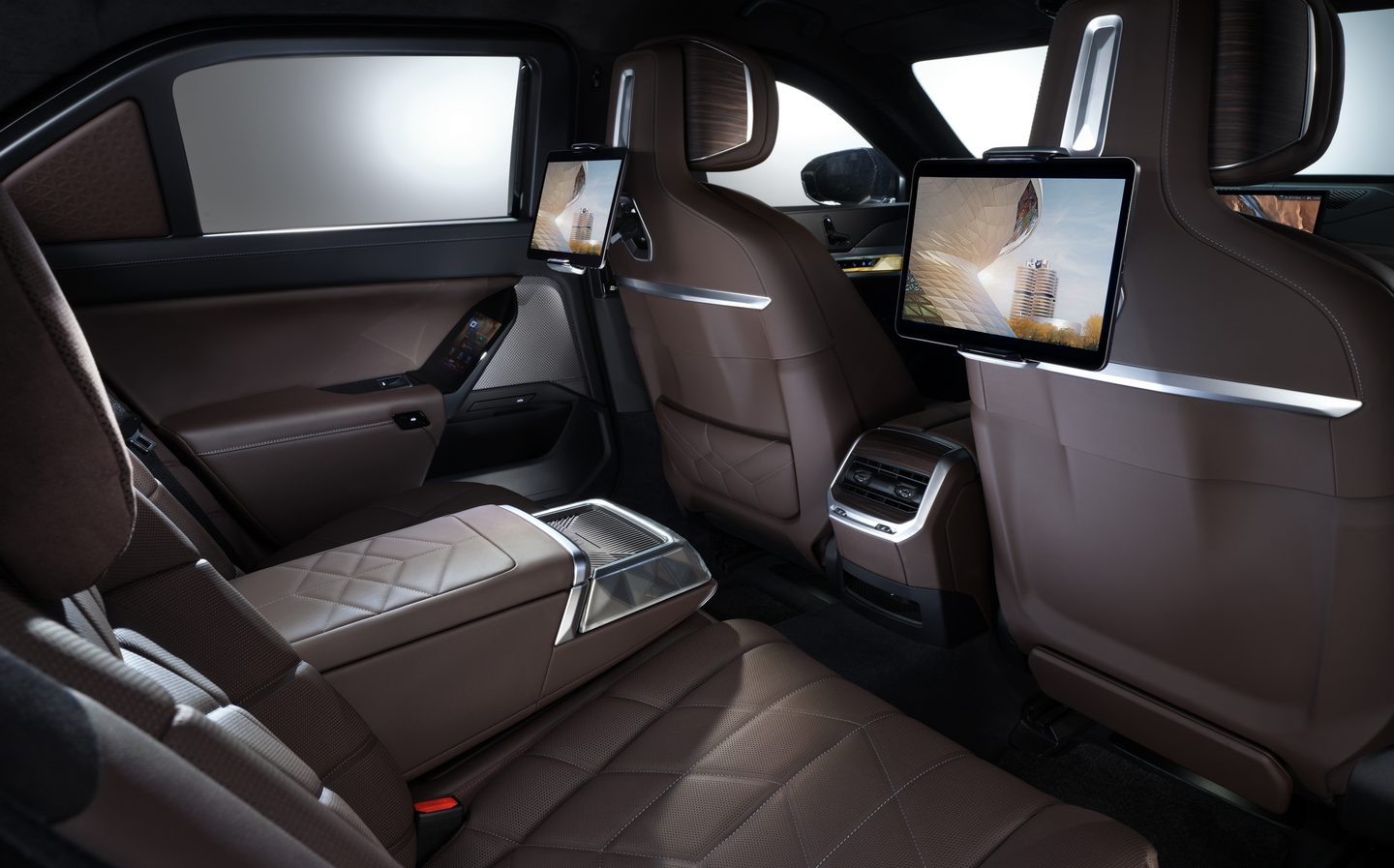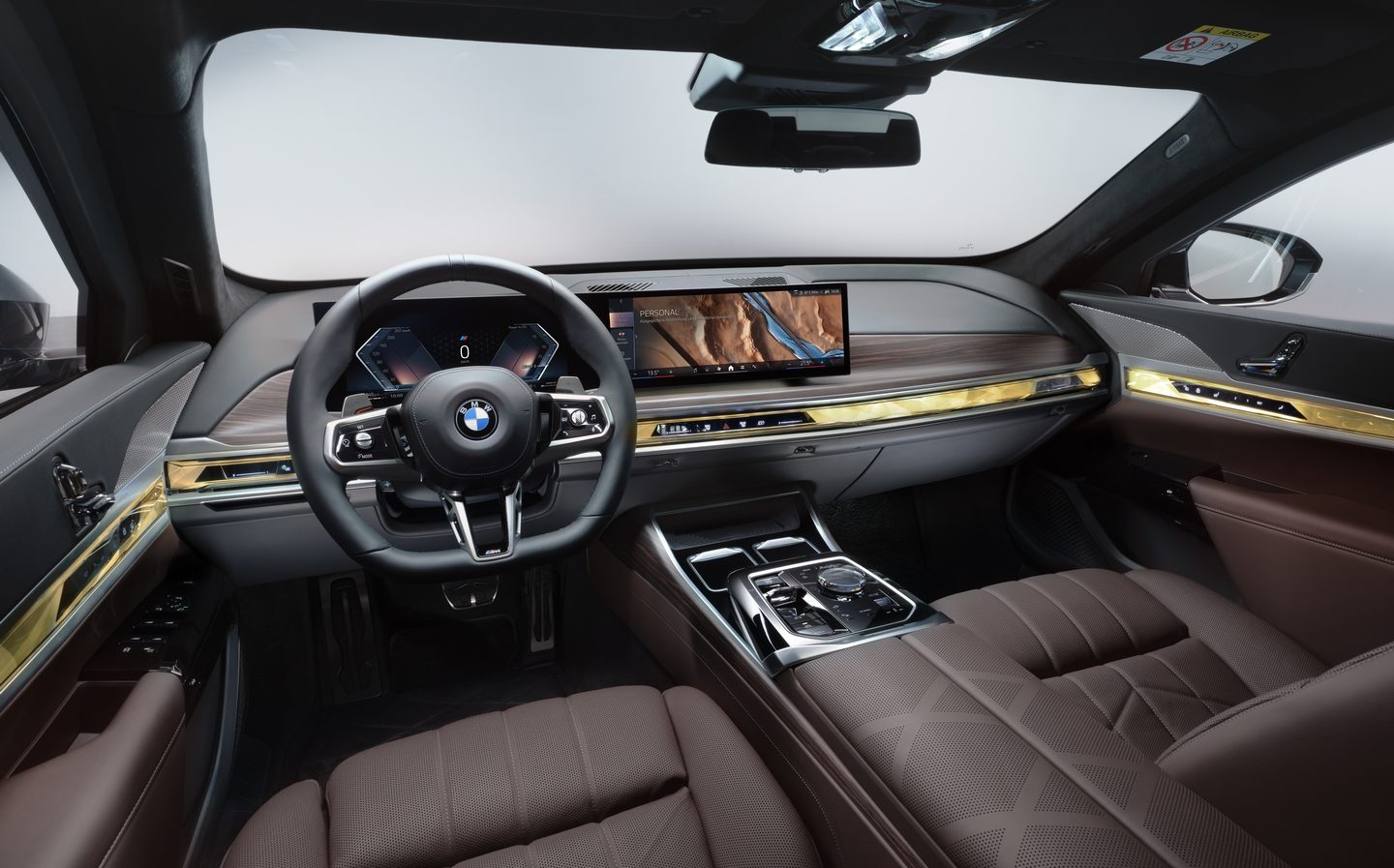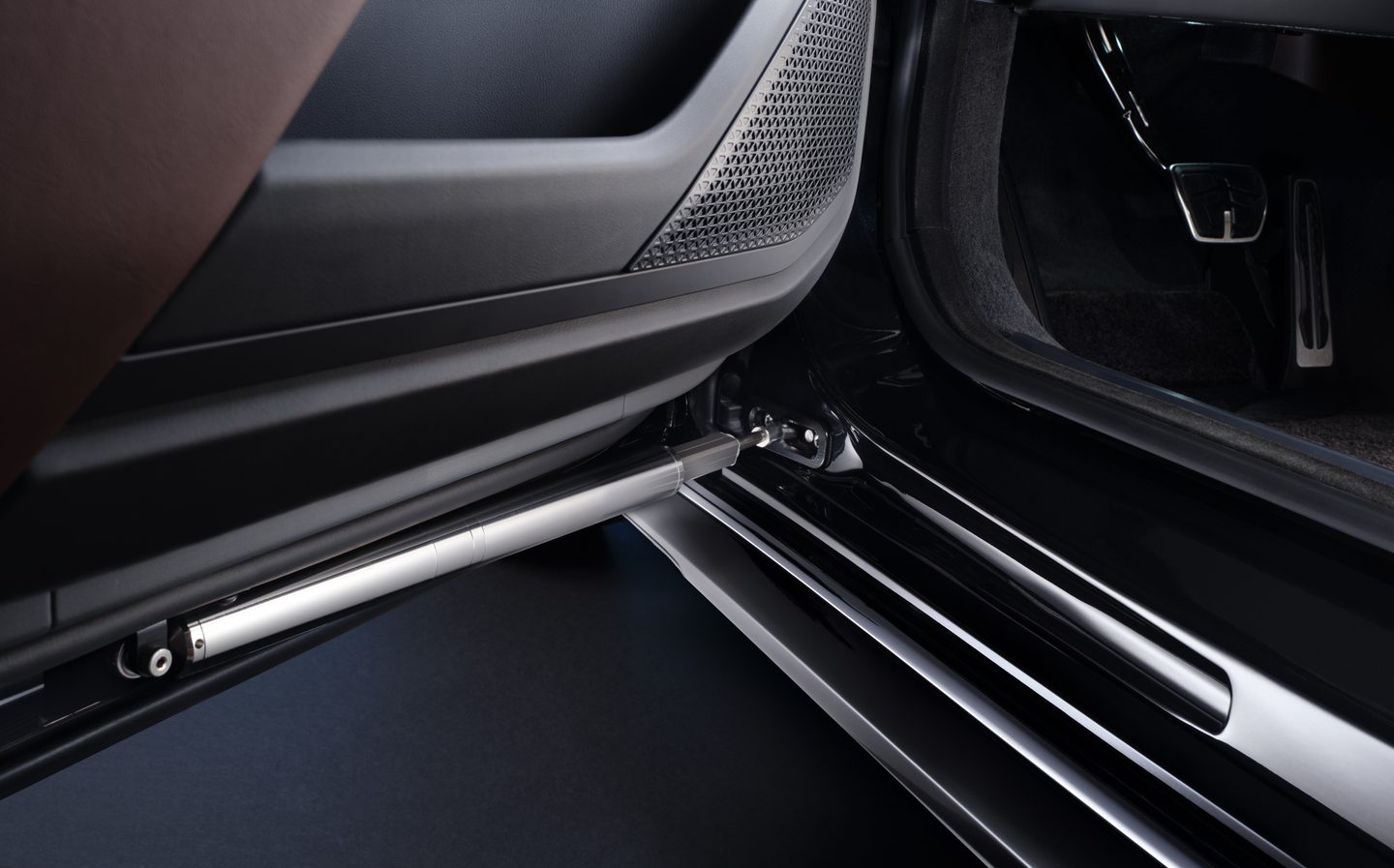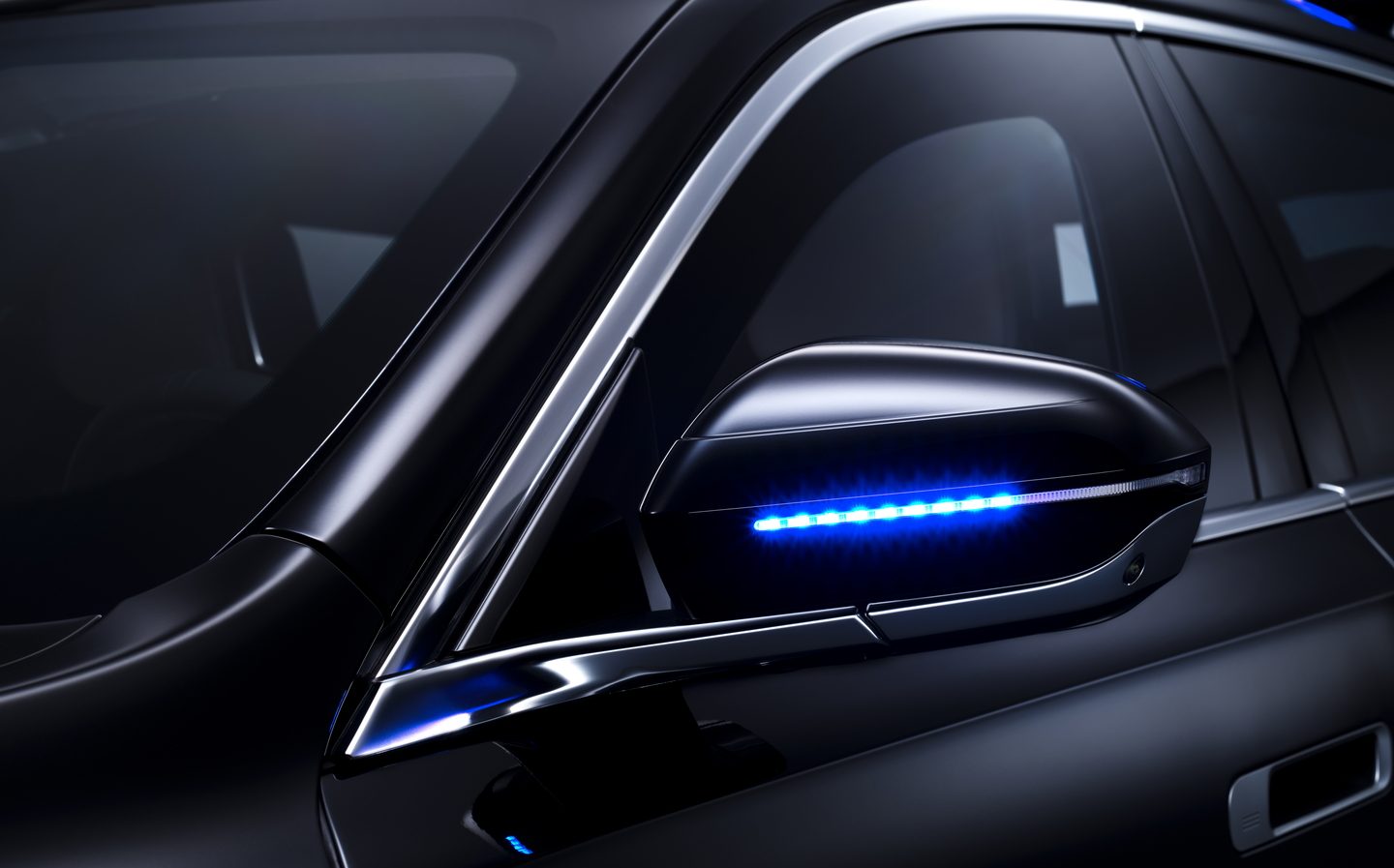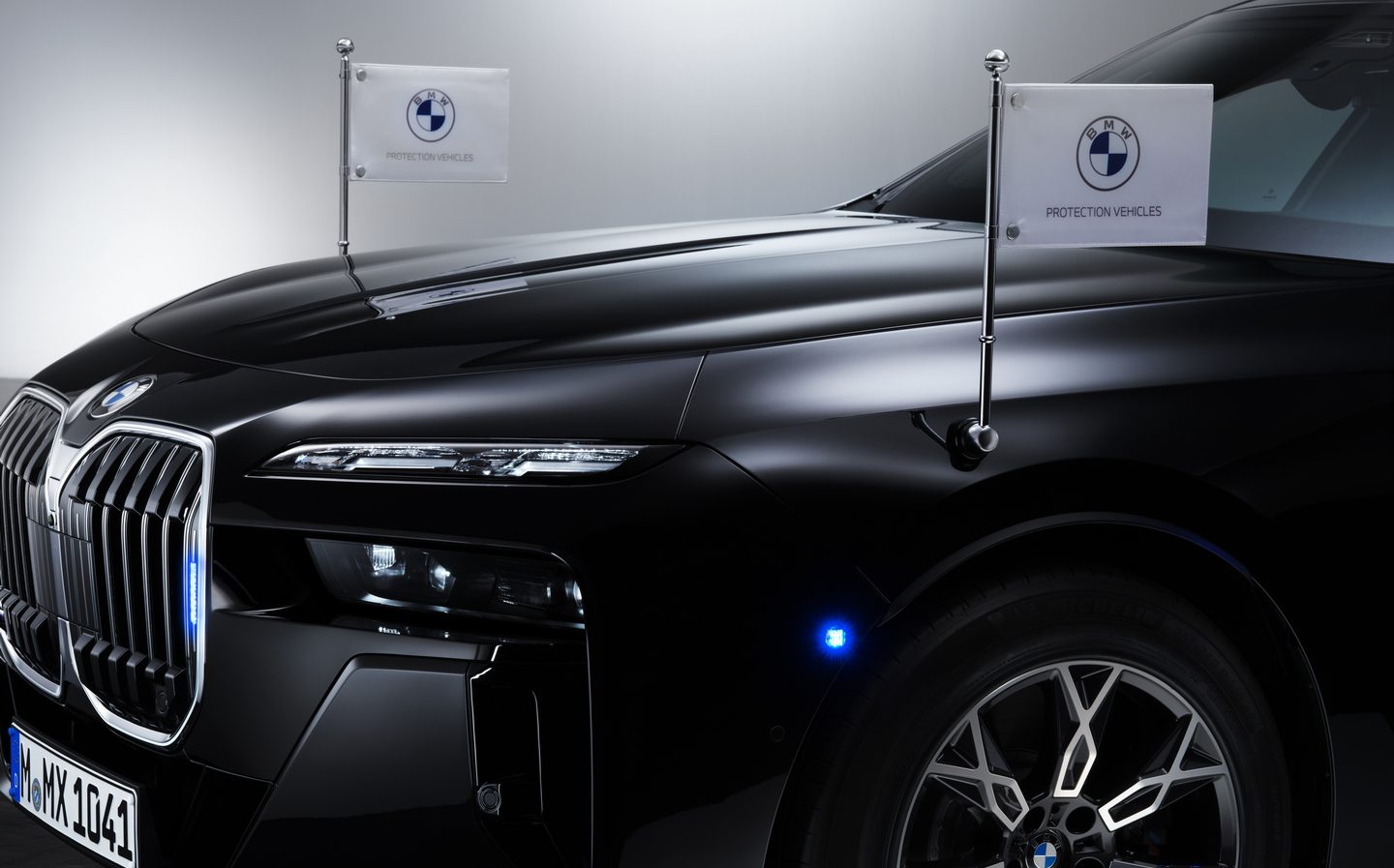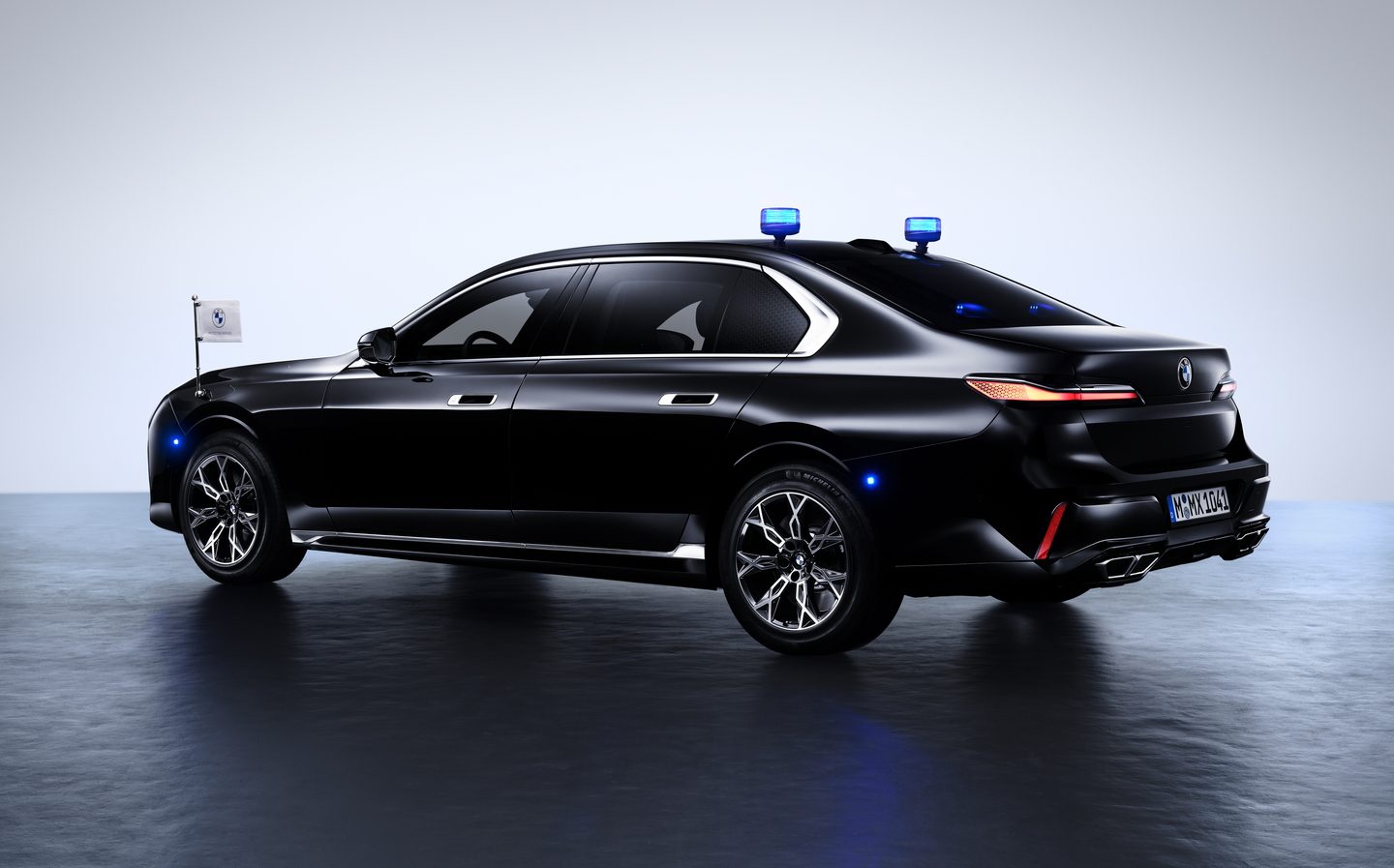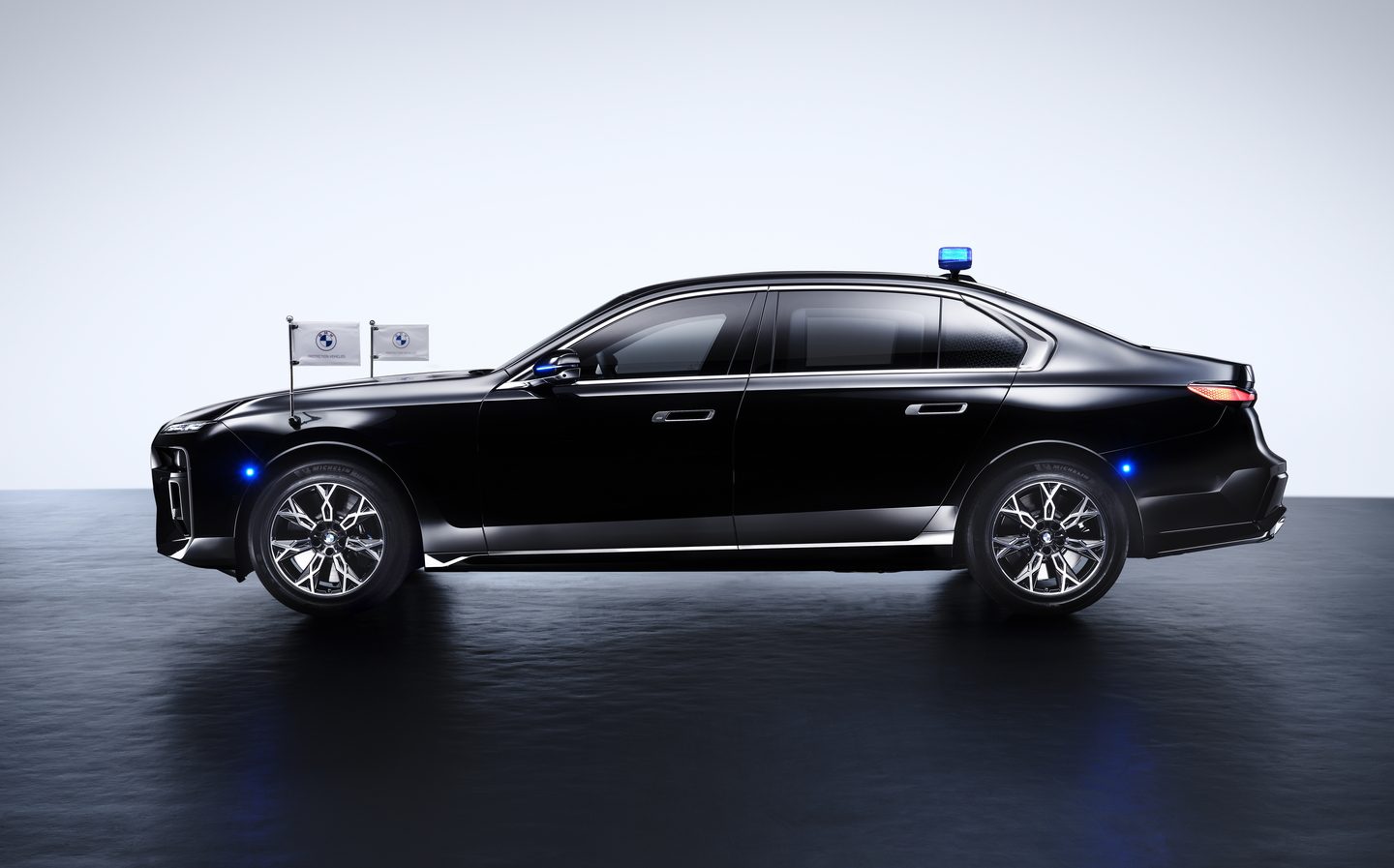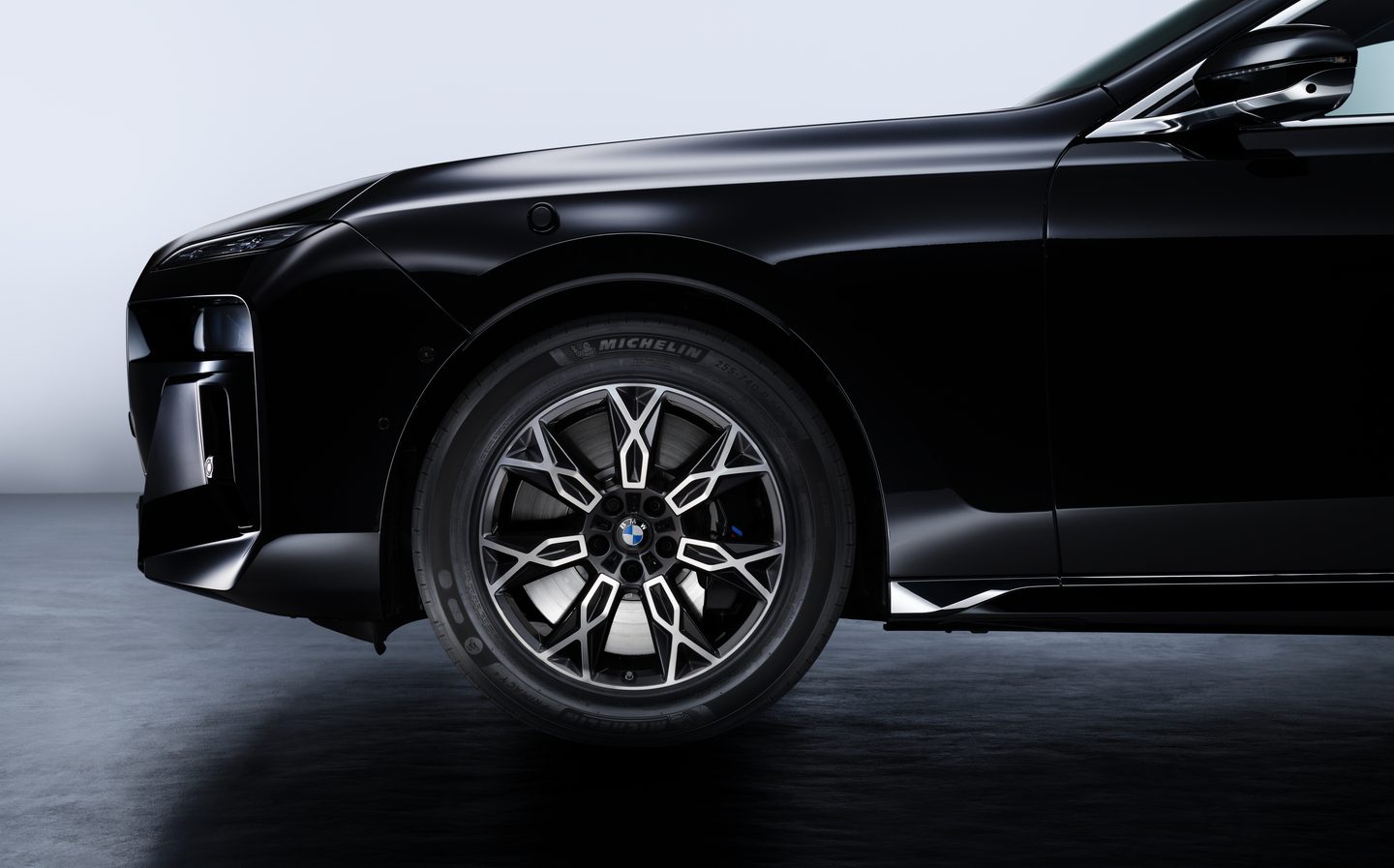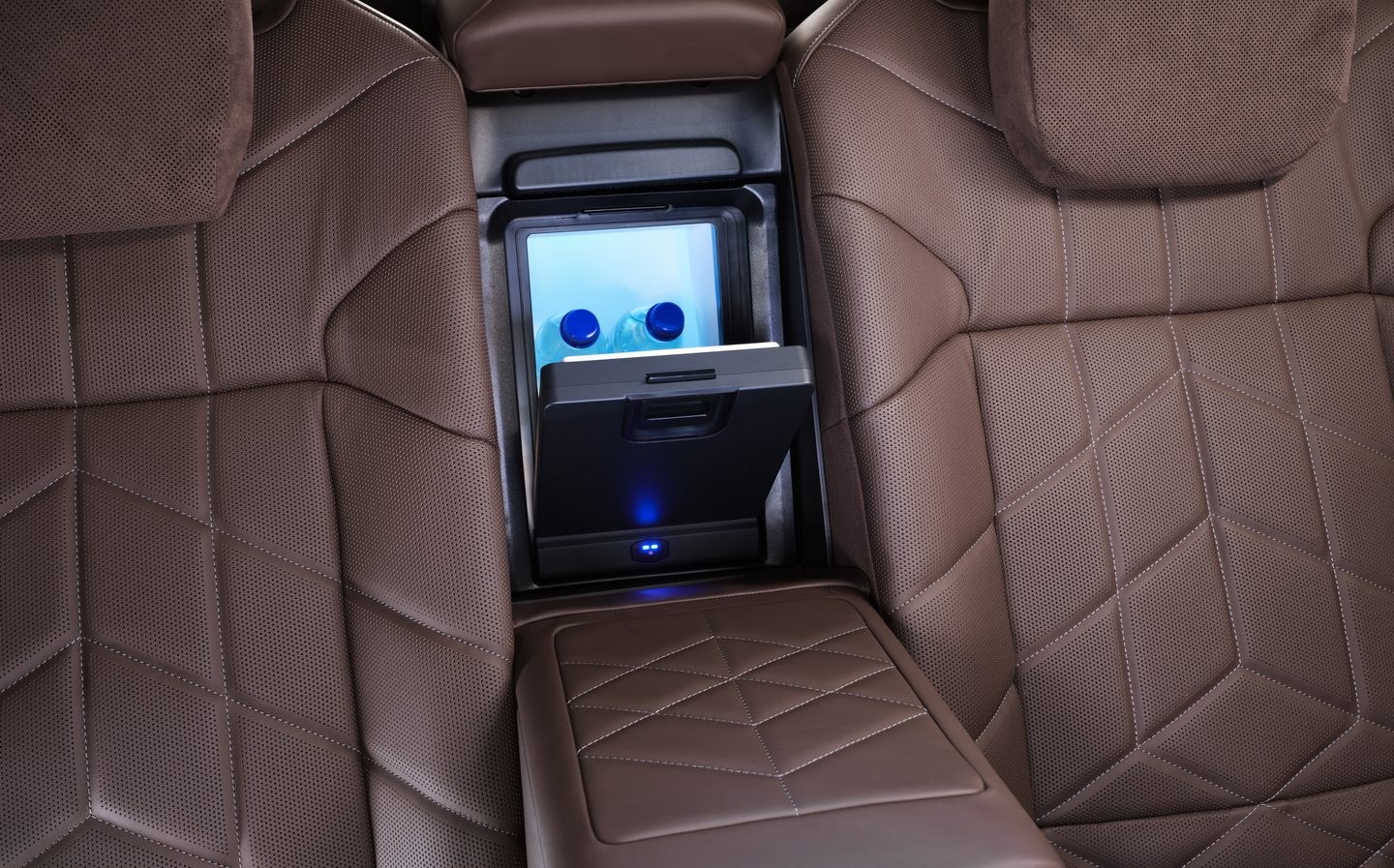Want an armoured electric car? The BMW i7 Protection is the answer
Protecting the environment and its occupants
BMW has revealed a new armoured version of its i7 electric luxury saloon.
The BMW i7 Protection meets the VR9 standard for … protection … against ballistic threats, meaning it can withstand a 7.62×51mm Nato armour-piercing bullet impact. The glass, meanwhile, meets the VPAM 10 standard, which is the highest level of protection for civilian armoured vehicles.
Underneath, the i7 Protection is based on the standard i7 but it uses what BMW calls its “Protection Core” technology — a self-supporting body structure made from armour steel. This is then combined with other protective features, including additional armour for the underbody, roof and glasswork.
Protection from drone attacks with explosive charges
As well as ensuring the car can protect occupants from small arms and shrapnel, along with “drone attacks with explosive charges”, the i7 Protection’s structure also allows the car to look much like a standard i7. BMW claims the armour doesn’t impinge on interior space too much, either.
More importantly, the German carmaker says the structure “optimised” the weight of the vehicle compared with other protection vehicles, improving the car’s load-carrying and handling abilities.
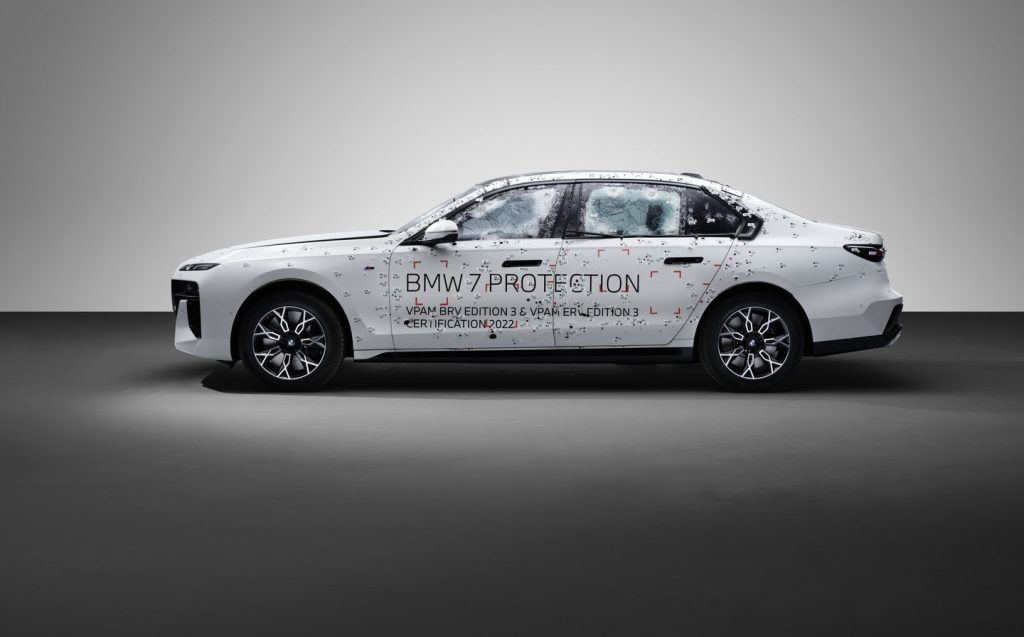
That means the i7 Protection consumes between 20.8 and 23.7kWh of battery capacity every 62 miles on the official economy test (2.6-3.0 miles per kWh), although BMW hasn’t confirmed exactly how that will translate to range. Assuming the i7 Protection uses the same 105.7kWh battery as the standard car, it should manage around 250 miles on a single charge.
Slower than standard i7
Admittedly, that means the weight has had an impact on the i7’s efficiency — the standard car will cover well over 350 miles on a charge — and performance has been impacted too. Whereas a stock i7 takes just under five seconds to get from 0-62mph, the 537bhp, all-wheel-drive i7 Protection will take nine seconds to achieve the same feat. Still, that’s what you get from your average family hatchback, so it isn’t exactly slow.
BMW says it has adapted the suspension specifically for the Protection model, and despite the extra weight its trick underpinnings allow “precisely controllable handling, even when they are being driven hard, such as when escaping from an attack.”
It’s the second time BMW has shown off an armoured electric car, having presented the BMW Concept iX5 Hydrogen Protection VR6 fuel cell EV at the Munich Mobility Show in 2021. However, this is the first electric protection vehicle to make it into production.
Petrol power available
As well as the i7 Protection, BMW is offering customers the chance to armour a more conventional, combustion-powered 7 Series. Like the i7 Protection, the 7 Series Protection will meet the VR9 classification but customers can choose to upgrade to the VPAM 10 classification if they so wish.
The 7 Series Protection will also come with a self-sealing fuel tank and a 4.4-litre, 523bhp V8 petrol engine. It’ll be faster than the i7 Protection, getting from 0-62mph in 6.6 seconds and on to a top speed of 130mph.
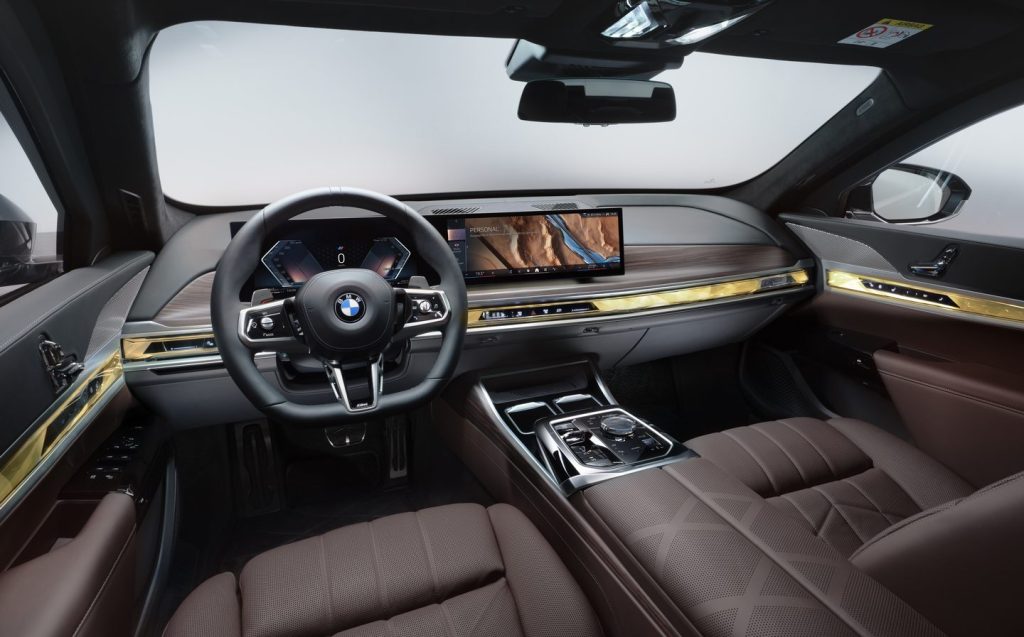
Both cars benefit from a range of other Protection-specific goodies, including a special touchscreen with extra features, including an intercom system, run-flat tyres and an optional fresh air supply system.
But luxury has not been forgotten, and the cars also get more common 7 Series features including a standard Bowers & Wilkins sound system and an optional coolbox that can store two water bottles and two glasses, chilling them to four or ten degrees Celsius, depending on passenger desires.
Perhaps the most useful option, though, will be the special protection driver training courses offered by BMW. These can be tailored to participants’ needs and include practical vehicle control exercises and tactical response training, as well as “comprehensive theory” sessions.
Related articles
- If you were interested in the BMW i7 Protection, you might be interested in BMW’s most powerful EV yet, the i7 M70
- Refreshed BMW X7 revealed with updated styling, revamped interior and mild-hybrid assistance
- Or, check out the best luxury cars to buy
Latest articles
- Best-selling cars 2025: The UK’s ten most popular models of the year so far
- Audi A6 Avant 2025 review: Trusty executive estate ticks expected boxes, and there’s still a diesel option
- Keir Starmer eases pressure on carmakers to sell EVs in response to ‘global economic headwinds’
- F1 2025 calendar and race reports: The new Formula One season as it happens
- Ferrari 12Cilindri Spider review: Heady blend of traditional and futuristic becomes even more intoxicating after lid is removed
- Skoda reveals its fastest accelerating production car yet: the electric Elroq vRS
- Carmakers fined £461m in UK and Europe for not competing over vehicle recycling
- Volkswagen Tayron 2025 review: Useful seven-seat SUV and decent PHEV — just not at the same time
- Skoda Enyaq 2025 review: Same book, different cover for electric SUV


